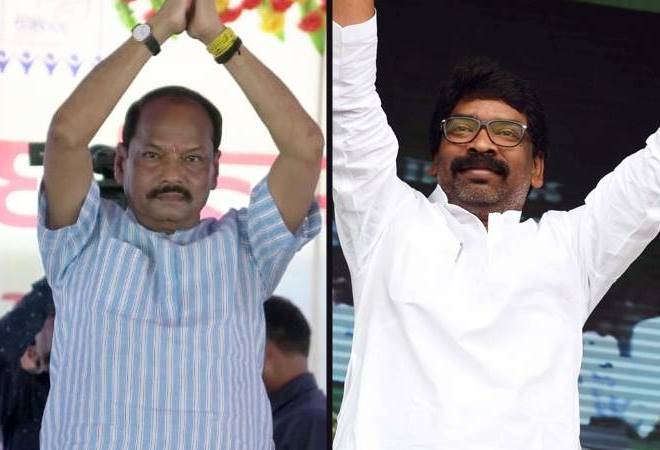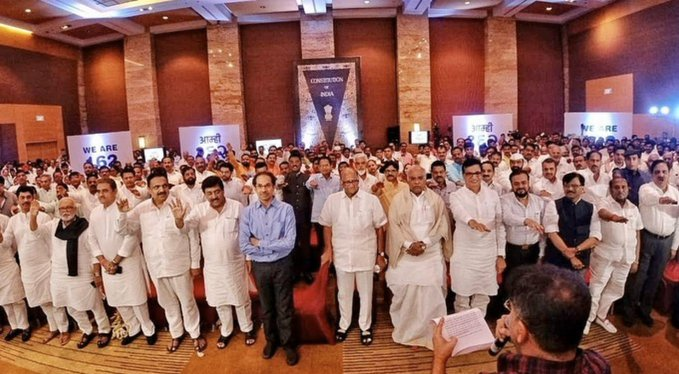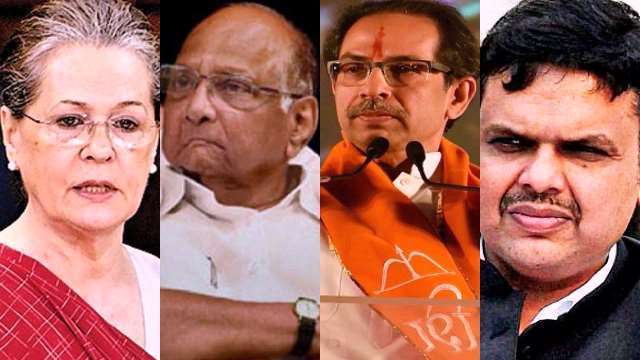On 17 September, 2019, when Gujarat’s Sardar Sarovar Dam reservoir was filled to its highest level of 138.68 metres to celebrate Prime Minister Narendra Modi’s birthday at the dam site, barely 20 km away from the dam, Bamani village in Nandurbar district of Maharashtra was gasping for life.
Nine kuchcha houses spread over a hillock of Satpuda range were sunk one by one between August 20 and September 16 in the rising backwaters of the Narmada river which surrounds Bamani from three sides.
“We had no clue that water would engulf our home in the dark of night. I gathered my wife and children and rushed towards my boat. Amid rising waters, I was able to sail through to a safer place at some distance nearby,” Kirta Vasave, a tribal farmer told Mongabay-India.
Bamani is among seven villages of the remotest corner of forest-clad Akkalkuwa tehsil of Nandurbar where scores of houses got submerged last month as the Sardar Sarovar Dam in Gujarat was filled up to maximum level.
Five more villages in Dhadgaon (Akrani) tehsil of Nandurbar are also affected in the flash floods (August-September 2019) caused by India’s third-highest concrete dam. Over 200 villages in the backwaters of this dam on the Madhya Pradesh-Maharashtra border are flooded at present. Madhya Pradesh even witnessed massive protests against the submersion.
“Over 100 families across 15 villages of Nandurbar lost their houses and valuables due to the government’s apathy. Most of them are small farmers or fishermen who often migrate to Tehsil place for manual labour,” said Laitka Rajput, an activist associated with the Narmada Bachao Andolan (NBA).
On October 11-12, Mongabay-India travelled by boat for hours to see the partially submerged villages of Akkalkuwa which are about 8 to 30 km away from the dam. These are virtually cut off from the rest of Maharashtra due to lack of power, road telephone, gas connection or means of transport.
Villagers had anticipated the situation in mid-August when water started touching their house. The non-governmental organisations working in the area alerted the authorities about possible floods. But before anything could be done, water engulfed over 100 houses by the second week of September.
As a result, some villages have now become islands and the tribal people are staring at huge losses as their farmlands are submerged and household items destroyed. A large number of timber and other trees also lost. NBA said that a few of the submerged farms were not even acquired for the project.
While Maharashtra is abuzz with political activities ahead of the legislative assembly elections on October 21, people of Manibeli, Mandva, Dhankhedi, Dannel and Chimalkhedi villages are picking up the threads of life once again.
Most of them don’t know who their sitting legislators or parliamentarians are. “We have never seen any elected representatives as no one visited the village so far,” said Kaliya Vasave of Bamani village.
What they are concerned about is the winters as the night temperature in this part of the Satpuda range dips to 8 to 10 degree Celsius in December-January. Right now, they have been put up in tin-shed rooms by the state.
Divalya Vasave of Bamani stressed that all that they are worried about is the protection of their kids from cold.
“Since our ready crops are lost, we have nothing to feed them. Neighbours are helping us but they are hand to mouth themselves,” Vasave said.
Some are a little more aware that others though.
Bolya Singa of Mukhdi village explained his participation in the election process, “We vote as per the advice of a ‘man’ who comes from the city on behalf of some leader before every election.” That ‘man’ hasn’t come yet in Mukhdi this year,” Singa said.
Nooraji Vasave of Chimalkhedi village said tribal people are left to survive on their own. “Our politicians want us to vacate the forests so that they can clear them for the development projects,” said Nooraji Vasave.

The Sardar Sarovar Dam (SSD) is one of the 30 large dams of the Narmada that began implementation in the late 1980s. The river basin also has 135 medium dams and 3,000 small dams. The plan to harness Narmada river for irrigation and power generation was initiated in 1946 and the foundation stone was laid in 1961. It got stuck for two decades due to the interstate dispute over the share of water.
Maharashtra’s 4,180 households (in 33 villages) were declared to be affected under the SSD project while Gujarat and MP have 4,763 (19 villages) and 23,599 affected families (178 villages). In 1994, seven years after the construction of the dam began, the NBA had approached the Supreme Court of India seeking to scrap the project due to concerns that thousands of families would be rendered homeless. But the apex court in 2000 allowed the construction of the dam but on condition that people living in the submergence area would be rehabilitated six months prior to any increase in the dam’s height. The dam was completed at the cost of Rs. 590 billion (Rs. 59,000 crores).
Maharashtra’s strange stand
Most Maharashtra villages had gone under the first partial submersion 25 years ago. Since then, the tribal people have witnessed the gradual sinking of their villages many times.
Most of the project affected families (PAFs) have been rehabilitated to other places over the years but people like Narayan Tadvi of Manibeli and Noorji Padvi of Danel continued to live on the same hills moving upwards as their rehabilitation claims are pending.
Surprisingly, in July 2019, Maharashtra had told the Narmada Control Authority (NCA), which takes a call about the raise on dam water, that no PAFs reside in the submergence area.
“The government of Maharashtra representative indicated that out of total 4,180 PAFs, 760 have been rehabilitated in Gujarat and 3,420 in Maharashtra. Some PAFs are untraceable and 152 PAFs have some issues with regard to the change of house plots or compensation amount which are being addressed. But they all are residing on above FRL (full reservoir level) and hence no PAFs are residing in submergence areas,” reads the NCA documents.
Since none of the villages was considered under the submergence area, the state didn’t propose to vacate them.
In the same meeting, the State admitted that 152 PAFs are awaiting compensation and some are “missing”. This is contrary to the claims of the Modi government that all families from the dam’s submergence zone in three states are rehabilitated.

In a surprising move, on August 29, the state’s Narmada Development Department compiled a list of 11 villages (five in Akkalkuwa) and 75 families “under submersion and for immediate evacuation” due to a rise in the dam height from 134 to 138.68 metre, as per the records available with Mongabay-India. Mukhadi is missing from the list where five houses collapsed in the water.
Senior journalist Shailendra Yashwant, who extensively covered the movement in the 1990s, expressed shock over Maharashtra’s response to the disaster. “In the 1990s, when advanced communication technologies were unavailable, the National Disaster Response Force and the police had taken all precautions to shift all families much in advance.”
Why were villagers not alerted on time?
NBA claimed that despite having information about the possible floods, the government didn’t inform residents leading to chaos.
Medha Patkar, the NBA leader, alleged that “the State’s false claims to the NCA about no PAFs in the submergence area suggests that the BJP governments of Maharashtra, Gujarat and Centre connived to appease the prime minister at the cost of poor.”
District collector Rajendra Bharud, however, refuted NBA’s claims. “Our men travelled on a barge to serve the notices to the villagers much before September17. I have visited the submerged areas on September 19. The panchnama of all affected houses have been conducted,” said Bharud while adding that pending compensation claims would be his top priority post-elections.
Each PAF is supposed to get five acres of agricultural land in lieu of their submerged farmland. Besides, they are entitled to get a piece of land to rebuild their houses. All expenses have to be borne by the Gujarat Government.

Patkar, who was on nine-day hunger strike recently has challenged the Gujarat government’s decision to raise the dam level without rehabilitating the people in the supreme court.
“It was illegal to collect the water up to 138.68 metres before giving full compensation to the remaining PAFs. Moreover, Gujarat didn’t need additional water this year as the good monsoon had filled up all 204 ponds,” said Patkar.
She also claimed that the dam has failed to meet most of its objectives and most of the water is being diverted to private companies.













